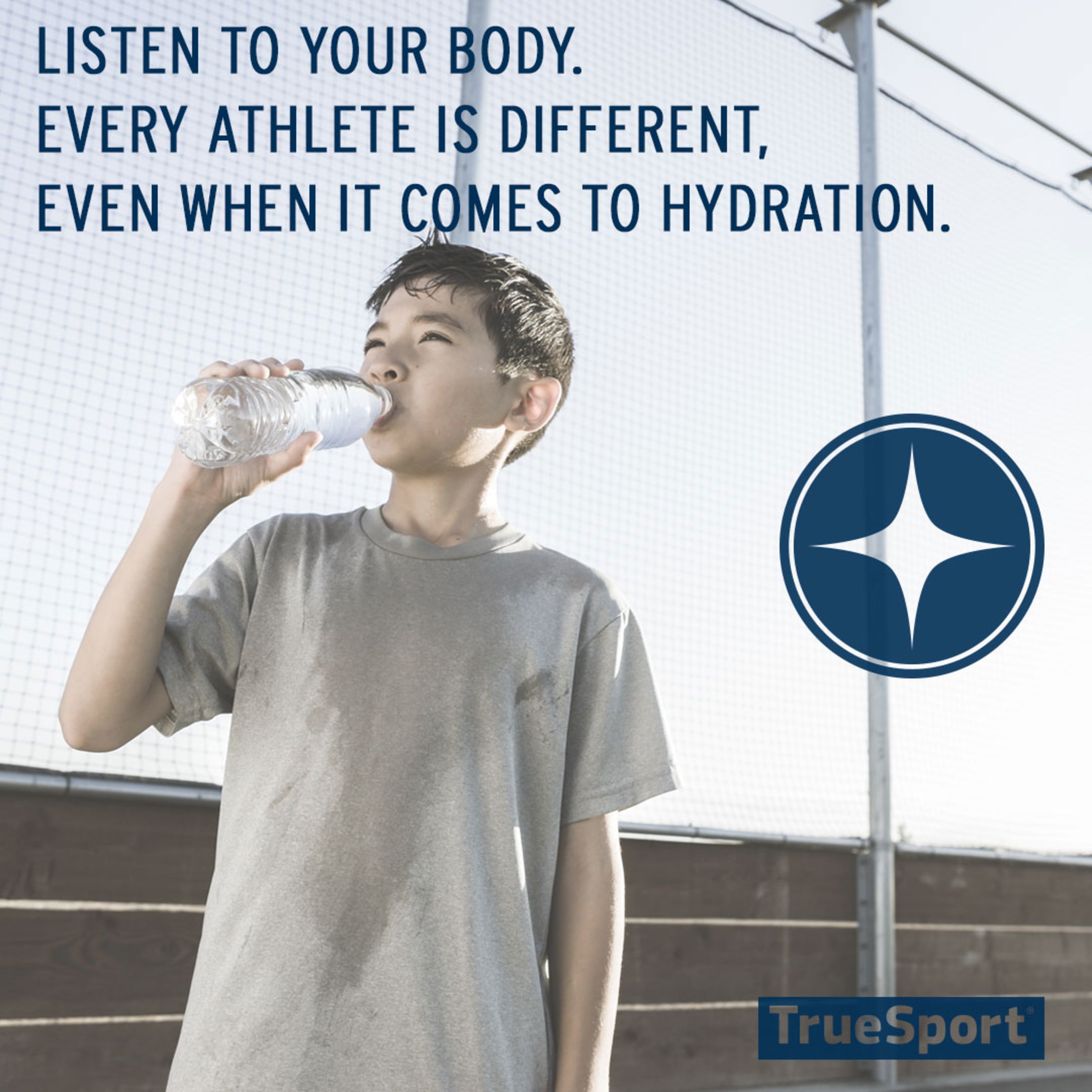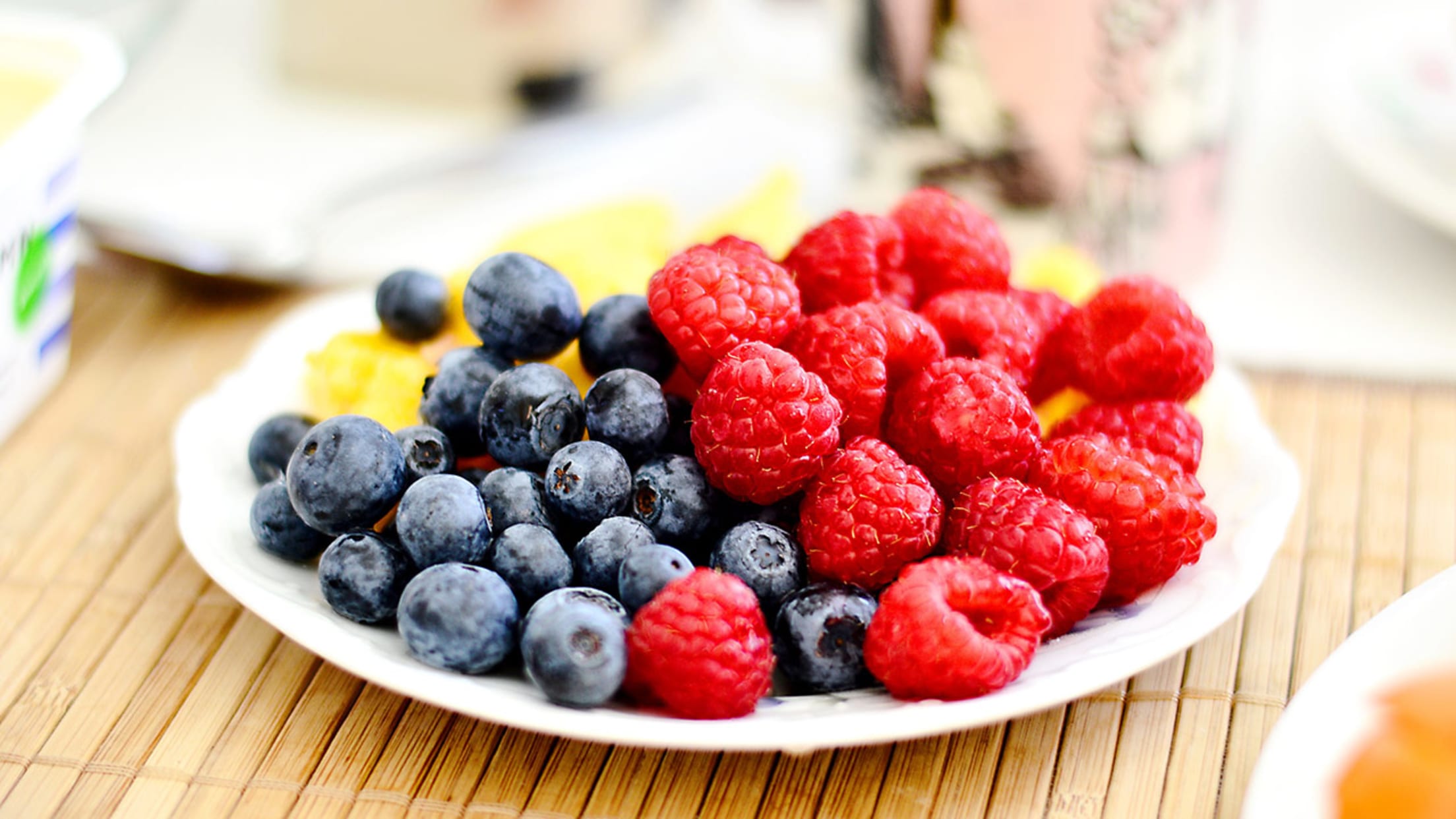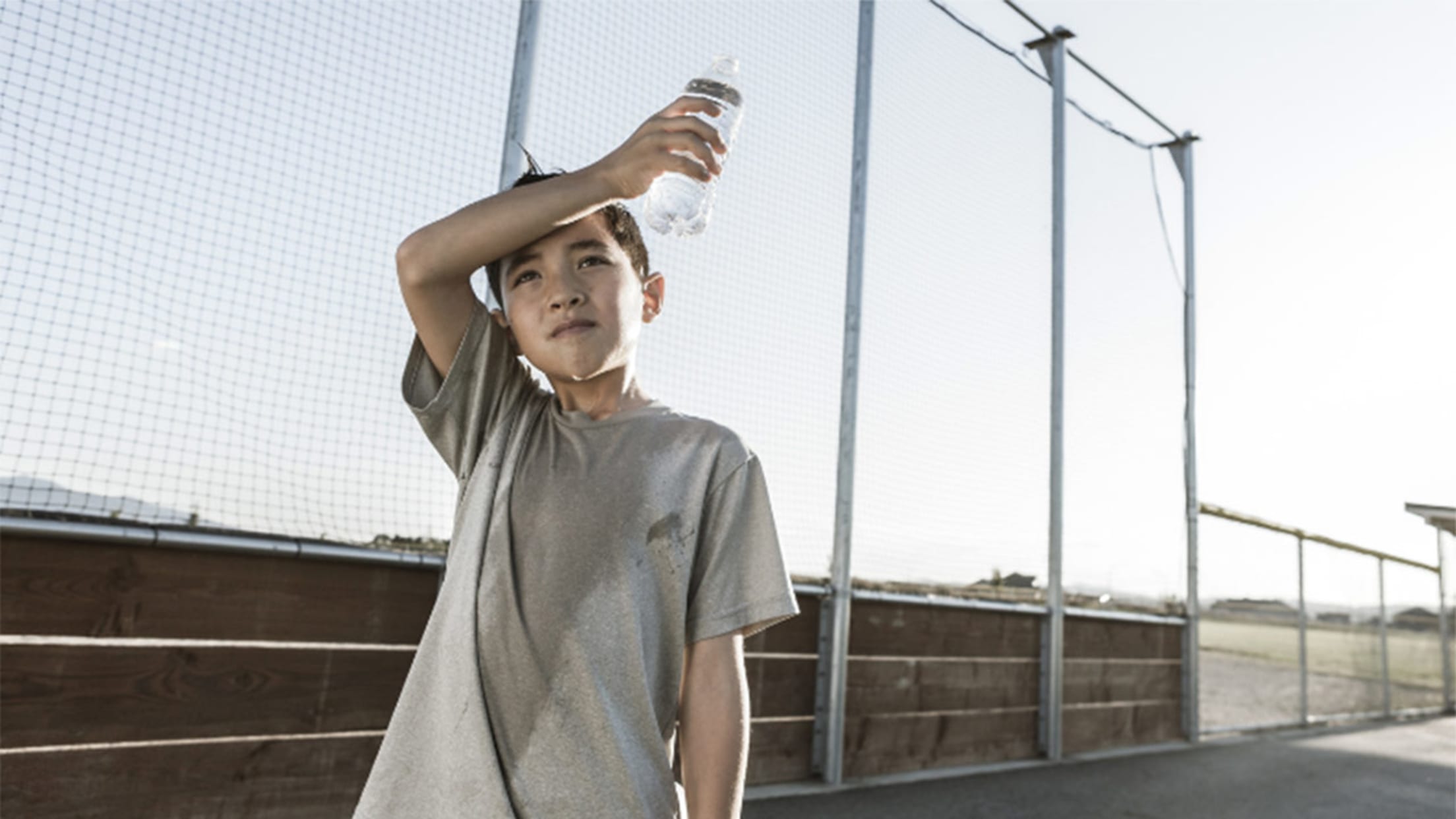TrueSport: June 2019

Reasons to invest in a multi-sport camp, why your athlete needs a hydration plan and how to hydrate your athlete if they don't like water this month from TrueSport.
Trending
Seven reasons to invest in a multi-sport camp
If you're considering sending your young athlete to a camp this summer, you may want to look into a multi-sport camp rather than a sport-specific camp.
"Anything we can do to give kids diversity in physical and physiological ways is a win," says Steve Smith, PhD. Smith is a professor of clinical psychology at University of California, Santa Barbara and focuses on working with young athletes and parents, especially around topics like early specialization in sport. Smith sees multi-sport camps as a great way for young athletes to experience other sports and develop new skills without the pressure of playing for new teams or committing more time during already-packed seasons.

"A multi-sport camp is ideal for helping young athletes avoid early specialization," says Smith. While tacking on extra sports during the year might be stressful for an athlete and difficult to handle from a time management perspective, a multi-sport camp allows young athletes to explore new sports without adding to an already-busy schedule.
Here are seven more reasons why you should invest in a multi-sport camp.
Promote chances for new teamwork and friendships
When young athletes are involved in one sport, they tend to end up with a tight-knit group of friends from that one team. While it's great to have close friendships, young athletes should be branching out, meeting new people, and learning to work with new teammates. In college, and in life, athletes aren't always going to be surrounded by teammates they've known since kindergarten, so developing social skills is key to long-term success.
"I work with a lot of collegiate athletes now, and I notice that they travel, practice and live with their teammates -- and if you're not able to become friendly with those new teammates, you're going to have a really hard time," says Smith. "By only knowing one set of teammates, you lose out on interpersonal skills."
It's important that kids develop their ability to interact with different types of people. A multi-sport camp offers a diverse group of athletes from different disciplines, locations and backgrounds. Young athletes will have the chance to get outside their comfort zone by participating in a multi-sport camp.
Learn to accept loss and failure
In the world of sport, being able to lose is just as important as being able to win when it comes to longevity. If your young athlete has been naturally talented and successful from a young age, it might be beneficial for him or her to experience not being the best on the field.
"We learn more from failures than we do from wins," says Smith. "Giving kids the opportunity to be in an environment where they aren't the best, where they have to step outside of their comfort zone, that's what teaches them about life and those important life skills."
Learn new skills
Enrolling athletes in a multi-sport camp can also help them develop in a more well-rounded way. Skills often blend from one game to another: footwork from soccer agility practice may be helpful on the football field and throwing a baseball may make a shot-putter tweak his stance.
Youth athletes exposed to multiple sports have been shown to be more consistent performers, experience fewer injuries and stay in sport longer than early-specializers. In a study of 700 professional baseball players, Smith even found that late specializing baseball players were "more likely to get college scholarships and that they consistently practiced more than early specializers."
Remember how to simply play
"Competition is hard, and it's hard to be in that place all the time. Young athletes now don't have a lot of time to just simply play, and camps can offer that," says Smith. "Taking away the competition and giving a kid an opportunity to just be playful and not results-focused is a huge win."
A multi-sport camp can offer young athletes a chance to rediscover the joy of playing, not for a result, just for the sheer fun of running, jumping, throwing and dancing.
Helps athletes get over injury
"There's a benefit to having a horizontal kid-one who can run fast but also play basketball and paint and play an instrument. You shouldn't be pinning hopes and dreams on one thing. When athletes do that and get injured, it can be devastating," says Smith.
A multi-sport camp can offer opportunities for cross-training so that your young athlete can continue to build skills and fitness without pushing an injury. Be sure to talk to a doctor before picking a camp in this case, as certain sports may be better for specific injuries than others.
Find a new talent or passion
Discovering new passions is a great thing for a young athlete. "If a kid specializes early, it increases the likelihood that they'll get injured or burned out and increases the likelihood of them being sedentary as adults," says Smith. "That's not what we want for our kids."
Helping children find sports that they can play for life is just as important as winning a championship. Many young athletes won't go on to be professionals, but they can go on to lead happy, active lives, and finding hobbies outside of that one focus can help them achieve that goal.
Learn independence
No matter how close you are with your young athlete, it's important that they get some time outside of your sphere of influence to discover what they are truly passionate about. "You need to let your child figure out who they are, and to do that, you need to separate yourself from the equation," says Smith. "Letting a child get away from the pressure can be a great thing for them."
_____
Parents and kids are often told that an athlete has to do one sport, do it early and do it year-round. But as Smith and the research indicate, that's not always for the best. So this summer, try enrolling your young athlete in a multi-sport camp.
Parents
How to hydrate your athlete if they don't like water
If you have a picky athlete who doesn't love the taste of water, or just one who's constantly on the go and bad at remembering to regularly sip from a water bottle, it can be tricky to make sure that he or she is staying consistently and properly hydrated.
Brianna Elliott, MS, RD, LD, shares a few tips for getting young athletes to consume more water throughout the day-even if they claim to 'hate' water.
Pick a fun bottle
Sometimes, all it takes to turn your athlete into a great water-drinker is providing the right vessel. "Young athletes should have a reusable water bottle with them throughout the day, even on days when they don't have practice or an event," says Elliott.

Simply finding a bottle that can easily fit in a backpack or gym bag, that won't spill if it's tipped over, and that looks cool can make a big difference in how much your child is drinking. There are thousands to choose from, so let your athlete pick a new favorite.
Make water more interesting
"Add flavor to water. Keep it simple by adding some fresh lemon juice, or flavor it up further by adding frozen fruits," says Elliott.
"Berries are a delicious option. Fresh cucumber and mint can also be added to water for a refreshing flavor." Allowing kids to pick their own flavor additions can make creating the perfect water combination more fun.
Find out what they hate
In addition to adding flavor, you might have success by simply experimenting with temperature. "Many young athletes are turned off by room temperature water," says Elliott.
"Kids might prefer ice cold water. In this case, a pitcher or cooler of ice-cold water should always be readily available to encourage them to drink whenever possible. In the case that kids prefer hot water, having tea or hot lemon water available will do the trick."
Add carbonation
Sometimes, a little fizz can go a long way. "I recommend providing beverages with similar tastes to favorites, but that don't have added sugars, so a carbonated beverage like La Croix instead of soda," says Elliott. "And if that's not quite sweet enough, adding a little bit of stevia or honey can add a more natural sweetness, which you can slowly decrease over time."
Dial back soda and juice
Technically, drinking soda or juice is hydrating, but it's not optimal from a nutrition standpoint. But cutting it out entirely can lead to less overall hydration, so it's important to shift to healthier options slowly.
"For kids, it's better to wean them off soda or juice. If a child is used to drinking something, it's hard to cut it out cold-turkey," says Elliot. To do this, water down sugar-sweetened beverages. "Half water, half juice is great," she says. If your child is a soda fanatic, you could consider adding carbonated water to a normal soda to cut sweetness but not the carbonation.
Alternatively, if the half-and-half taste isn't cutting it, compromise. "If a child is unwilling to give up soda or juice, I tell them to have at least half a cup of water before drinking the sweet beverage so that they aren't thirsty when drinking the soda," she says. "It helps them drink less and not drink soda due to thirst."
Add water-packed foods
"Eat water-rich foods throughout the day, such as fruits and veggies," says Elliott. "Berries, watermelon, mangoes, cucumber, carrots, celery, apples and cauliflower are examples of water-rich produce. Parents should aim to keep these foods convenient at home, so their kids are more likely to snack on them. Additionally, fresh fruits and veggies should be emphasized as snacks at practices, rather than salty snacks that can be dehydrating."
Make it a game
Create a reward system for good hydration and make a game out of your athlete's drinking. "Come up with a way for your athlete to track his or her water intake," says Elliott. "Each day that they meet their needs they get a reward. Hydration tracking apps are a great way to do this and can make staying hydrated more fun."
_____
Remember, if you're telling your athlete that he or she needs to drink enough water, you should be drinking enough water as well!
Make sure you're not sipping a soda instead of your water bottle when you show up at practices, and if you're pushing water-filled fruit and vegetable snacks on your child, you should be eating them too.
Coaches
Five reasons why your athlete needs a hydration plan
There's no way to know exactly how much water each of us needs to consume daily. With varying levels of activity, finding the right balance of fluid intake for young athletes can seem like a guessing game. But, it's important to note that without a proper hydration plan, there are potential dangers from both dehydration and the lesser known over-hydration that can be a matter of life and death. So how can you help an athlete figure out the right hydration plan for themselves?
Dr. Mitchell Rosner, a nephrologist with a clinical focus on fluid and electrolyte disorders, acute kidney injury and polycystic kidney disease (PKD), has dedicated much of his work at the University of Virginia to studying the potentially fatal impacts of over-hydration in young athletes. According to Rosner, over-hydration is one of the most preventable and least understood problems that coaches face.

Many of us have spent most of our lives being told to make sure to drink more fluids, but several deaths in marathon races and at football practices due to over-hydration prove that you can get too much of a good thing.
As we approach these hot summer months, it's important to know how to spot the symptoms of over-hydration and how to help your athletes develop a plan to stay balanced with their hydration needs on and off the field.
1. Effects and symptoms of over-hydration
Over-hydration can lead to hyponatremia, meaning too much water is consumed and an athlete's electrolyte balance is dangerously diluted. "People will feel bloated or have a bit of a headache or some nausea, but unfortunately, those are the same symptoms of dehydration," says Rosner.
"But if you've been drinking a lot, you should be able to know that you should stop drinking. Even then, it may be too late-your stomach is already full of water. The best thing to do is to try to avoid getting there," Rosner adds. And, if an athlete is experiencing these symptoms or displaying signs of confusion, you should seek medical attention immediately.
2. Dehydration v. over-hydration
"Dehydration in youth sports is relatively mild and rarely life-threatening, but water overload is absolutely life-threatening," says Rosner. While you should be urging your athletes to stay properly hydrated throughout the day, you shouldn't focus on filling them with gallons of water on game day. A few sips of water during most games or practices is usually all an athlete will need, adds Rosner. Remind athletes to sip when thirsty, but don't force them to consume a specific volume of water.
3. How to gauge hydration needs
"If you just use thirst as a guide, that's the optimal way to gauge how much you need," says Rosner. "Thirst is an innate feeling, and rarely would someone not know that they're thirsty."
"There's a myth that if you're feeling thirsty, it's too late and you're already too dehydrated - but that's not the case," Rosner adds, and studies support this assertion. "It's rare a young athlete would ever get dehydrated in a baseball game or at cross-country practice," he says.
4. How you can help an athlete make a plan
The best way to develop that plan, Rosner says, is by using the scale as a guide. "A good rule of thumb is that if you're gaining weight during an athletic activity, you're drinking too much. You shouldn't lose more than a few percent of your body weight -- that indicates dehydration -- but losing a little weight during exercise is fine. You can replace that after activity."
Weigh your athlete before and after a few practices to get a sense of how much weight they lose during activity. Ask how they feel and note both their weight and feelings. Keep a record, and eventually, patterns will emerge.
You'll be able to estimate how much your athlete should be drinking during practices and in competition. "If you feel lightheaded and you dropped weight, you need to drink more," says Rosner. "If you're feeling bloated, you're probably drinking too much."
5. Teach self-advocacy
Coaches may push fluids on athletes during a hot game or match, but each athlete needs to be able to think for him or herself. "That's very important -- hydration is so individual, and everyone has different needs," says Rosner.
If a coach is pushing athletes to drink a lot, it can be lethal. "There are cases of high school athletes following coaches' recommendations who died from over-hydration. Every year, we see fatalities, and the sad thing is, it's completely preventable," he adds.
Make sure your athlete knows that they can say no to chugging a water bottle after running a lap and can ask for a drink break if thirsty. Your athlete should feel in control of their hydration plan - that's the key to developing an athlete who's successful in the long term.
_____
Rosner wants coaches to remember that "there's no calculation that's going to be perfect: people sweat at different levels, temperatures impact how much you sweat, how hard you work impacts how much you need to drink to replenish,"
Finding an optimal hydration plan that works for each athlete will take a little bit of trial and error, but making sure your athletes are staying properly hydrated will not only help them perform at their best, but it will also ensure the safety of your team throughout the sport season.
About TrueSport
TrueSport®, a movement powered by the experience and values of the U.S. Anti-Doping Agency, champions the positive values and life lessons learned through youth sport. TrueSport inspires athletes, coaches, parents, and administrators to change the culture of youth sport through active engagement and thoughtful curriculum based on cornerstone lessons of sportsmanship, character-building, and clean and healthy performance, while also creating leaders across communities through sport.
For more expert-driven articles and materials, visit TrueSport's comprehensive LEARN resource.
This content was reproduced in partnership with TrueSport. Any content copied or reproduced without TrueSport and the U.S. Anti-Doping Agency's express written permission would be in violation of our copyright, and subject to legal recourse. To learn more or request permission to reproduce content, click here.
